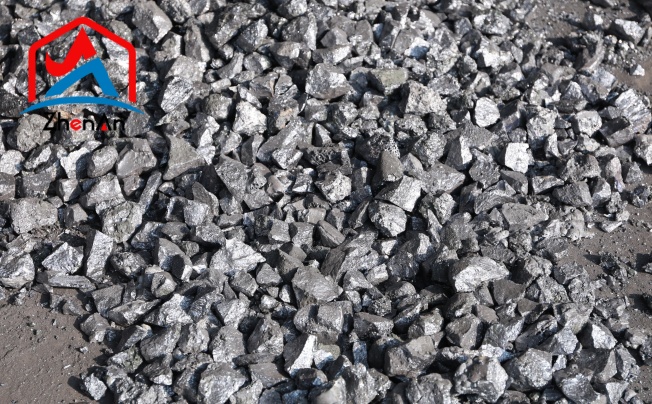Metalloids are a fascinating group of elements that exhibit properties of both metals and nonmetals. They straddle the line between these two distinct categories on the periodic table. These elements possess a unique blend of characteristics, making their identification a topic of great interest and importance in chemistry.
Characteristics of Metalloids
Physical Properties
Metalloids possess a unique combination of physical properties that set them apart from both metals and nonmetals. In terms of appearance, metalloids exhibit a metallic luster but are brittle, unlike typical metals that are malleable. The shiny appearance of metalloids can be misleading, as their brittleness distinguishes them from true metals.
This characteristic serves as a visual clue for identifying metalloids in various forms. When considering density, metalloids generally fall between the densities of metals and nonmetals on the periodic table.
This intermediate density is another key factor in distinguishing metalloids from other elements. For example, Boron has a density of 2.34 g/cm³, which is significantly lower than most metals but higher than nonmetals like sulfur or phosphorus.
Understanding the density range of metalloids provides valuable insights into their classification based on physical properties. Regarding melting and boiling points, metalloids display varied thresholds compared to pure metals or nonmetals.
Silicon, for instance, has a melting point of 1414°C and a boiling point of 3265°C, showcasing a high resistance to temperature changes. These distinctive melting and boiling points contribute to the versatility of metalloids in different industrial applications due to their ability to withstand extreme heat conditions.
Chemical Properties
The chemical properties of metalloids further emphasize their unique nature within the periodic table. One significant aspect is the reactivity with acids and bases displayed by these elements.
Metalloid oxides often exhibit amphoteric behavior—meaning they can act as both acidic and basic compounds depending on the reaction environment. For instance, boron oxide reacts with strong bases to form borates while reacting with strong acids to produce boric acid.
Conductivity serves as another crucial chemical property that distinguishes metalloids from other elements. While not as conductive as pure metals like copper or silver, metalloids such as silicon possess semiconducting properties essential for electronic applications.
Boron (B)
Boron, a versatile metalloid, finds its prowess in the glass manufacturing industry. Its unique properties make it an essential component in producing borosilicate glass.
This type of glass is known for its exceptional thermal shock resistance and durability, making it ideal for laboratory equipment, kitchenware, and even telescope lenses. Boron's ability to impart strength and stability to glass products has revolutionized various sectors reliant on high-quality glass materials.
Another intriguing application of Boron is its use as a neutron absorber. Boron-10 is particularly effective in absorbing neutrons due to its favorable nuclear characteristics.
By incorporating boron-containing materials into structures like nuclear reactors or radiation shielding devices, the potentially harmful effects of neutron radiation can be significantly mitigated. Boron's ability to interact with neutrons underscores its crucial role in enhancing safety measures within the nuclear industry.
Silicon (Si)
Silicon reigns supreme in the semiconductor industry as the cornerstone material for electronic devices and integrated circuits. Its semiconducting properties enable the creation of transistors, diodes, and other vital components essential for modern electronics.
The controlled manipulation of silicon's conductivity through doping techniques allows for intricate circuit designs and high-performance computing systems. Silicon technology's relentless innovation continues to shape our interconnected digital world.
Silicon's influence extends beyond microelectronics into renewable energy solutions, notably solar power generation. Photovoltaic cells made from silicon harness sunlight to generate electricity efficiently.
Silicon's abundance and cost-effectiveness have propelled the solar industry towards widespread adoption of solar panels worldwide. As advancements continue to enhance silicon-based photovoltaic technologies, the prospect of achieving sustainable energy sources becomes increasingly promising.
Germanium (Ge)
Germanium plays a pivotal role in fiber optics technology due to its unique optical properties that enable efficient transmission of data through optical fibers. By integrating germanium-based components into communication networks, data can be transmitted over long distances at high speeds with minimal signal loss. The exceptional clarity and conductivity of germanium make it indispensable for ensuring reliable communication infrastructures essential for modern society's connectivity needs.
The remarkable properties of germanium hold immense promise for applications in nanotechnology research and development. At the nanoscale level, germanium exhibits intriguing quantum effects that could revolutionize fields such as quantum computing and advanced sensors. Through innovative approaches leveraging germanium's unique characteristics, scientists are exploring new frontiers where precision engineering at the atomic scale opens doors to unprecedented technological advancements with profound implications across various industries.
Identifying Metalloids
Physical Properties
When it comes to identifying metalloids based on their physical properties, one key characteristic is that they are typically solid at room temperature. This distinguishes them from nonmetals, which can exist in various states such as gases or solids. Moreover, metalloids possess a unique blend of metallic appearance and brittleness.
While they may look somewhat like metals with a shiny luster, their brittleness sets them apart as they are prone to shattering when subjected to stress. In terms of conductivity, metalloids showcase an intriguing behavior that falls between that of metals and nonmetals.
They exhibit intermediate conductivity, meaning they are not as efficient conductors of electricity as metals yet have a higher conductivity compared to nonmetals. This property makes conductivity testing a valuable method for confirming the presence of metalloids in a given sample, especially when combined with other identification techniques.
Chemical Properties
Metalloids display distinctive chemical properties that contribute to their identification process. One notable aspect is their ability to form alloys with metals.
This property underscores the intermediate nature of metalloids between metallic and nonmetallic elements since alloys typically exhibit characteristics different from those of pure elements. Additionally, metalloids exhibit amphoteric behavior by showing both acidic and basic properties depending on the chemical environment in which they are placed.
The dual nature of these chemical properties makes metalloid identification through chemical testing a nuanced process requiring careful analysis and observation. By conducting experiments that investigate how an element interacts with acids and bases under controlled conditions, scientists can ascertain whether the element exhibits typical metalloid behavior in terms of its reactivity profile.
Location on the Periodic Table
Understanding where metalloids fall on the periodic table is crucial for their accurate identification within the realm of chemistry. Metalloids are strategically positioned along the staircase line between metals and nonmetals on the periodic table, emphasizing their intermediate status between these two elemental categories. Elements such as Boron (B), Silicon (Si), Germanium (Ge), Arsenic (As), Antimony (Sb), Tellurium (Te), and Polonium (Po) are prime examples classified unequivocally as metalloids based on this precise location criterion.
By recognizing this specific placement within the periodic table framework, scientists can effectively predict certain properties exhibited by these elements due to their shared characteristics as metalloids. This knowledge serves as a foundational principle for not only identifying individual elements but also understanding broader trends related to similar elements within this unique group.
Conductivity Test
Unveiling the Electrical Behavior of Metalloids
When it comes to identifying metalloids, one crucial test involves assessing their electrical conductivity. Metalloids possess a unique characteristic in that they can conduct electricity, but not as effectively as pure metals.
This intermediate behavior is due to the partial presence of free electrons within their atomic structure, allowing for some movement of electric charge. When subjected to an electrical current, metalloids will display conductivity, albeit at a lower level compared to metals such as copper or silver.
An Electrifying Distinction
The conductivity test serves as a distinguishing factor between metalloids and nonmetals. While nonmetals are generally poor conductors of electricity due to their lack of free electrons, metalloids bridge the gap between these non-conducting elements and highly conductive metals.
This unique property makes the conductivity test a reliable method for differentiating metalloids from other elements on the periodic table.






